
Volvo XC40 Review

Introduction
It’s three years since the introduction of the Volvo XC40 and it still looks as fresh as ever. It’s proving as popular as ever too, with a slew of high-profile awards packing out its trophy cabinet, including European Car of the Year.
Review Sections
Select's rating score* - 4.4 / 5
At a Glance
There’s a certain level of indifference to most vehicle designs, with many models looking broadly similar to each other. The XC40 doesn’t, standing out on its own with a distinctive but not divisive design. Granted, it shares much of its look with its bigger XC60 and XC90 siblings, but it’s unlike much on the market, including big-hitters from Audi or BMW.
Step inside and there’s a beautifully Scandinavian cabin that’s luxurious yet minimalistic at the same time, with clever touches that make a difference to daily life.
You could be forgiven for getting confused about the various engine and trim options, with four petrol engines, two plugin hybrids and an electric option, along with seven trim levels, but one thing that you won’t be left considering is diesel power - there's no sign of an oil-burning engine anywhere in the range.
There’s no hot-hatch-like version either, but does a Volvobuyer want that? The Swedes know their market, and the XC40 might just play perfectly to it.
Key Features
It’s always been a case of safety first at Volvo, but that doesn’t mean it’s got to come at the expense of everything else. Still, there’s a veritable truckload of safety gear fitted to the XC40 as standard, ensuring buyers get the best opportunity to avoid having an accident in the first place. And, should the worst happen, there’s even more tech to keep you safe during, and even after, the crash itself.
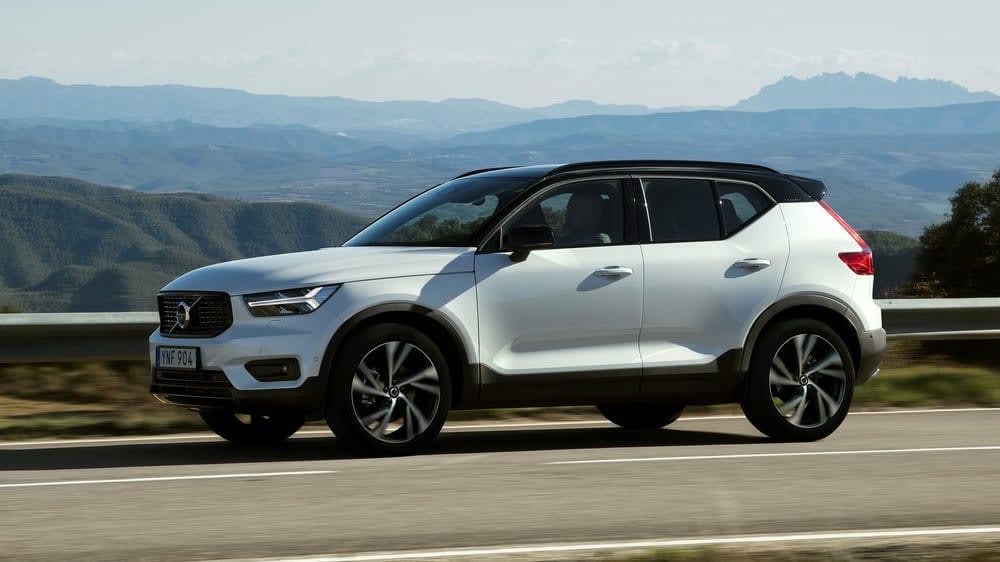
Despite its compact dimensions - it’s only 5cm longer than a Ford Focus - there’s loads of space for its occupants and even a decent-sized boot. It’s loaded with equipment too, even at the entry-level to the range, making it a great family car.
Petrol, hybrid and electric power is available, so there’s nearly a model to suit everybody. Those covering long distances will miss the chance of a diesel engine though, as Volvo has stopped fitting these to UK models.
Distinctive design leads to distinctive thinking, with Volvo choosing to buck the trend for ever-firmer ‘sporty’ cars, focussing instead on ride quality and comfort. With Scandinavian design, Swedish build quality and impressive comfort levels, it’s as classy and stylish as any of its big-name premium rivals.
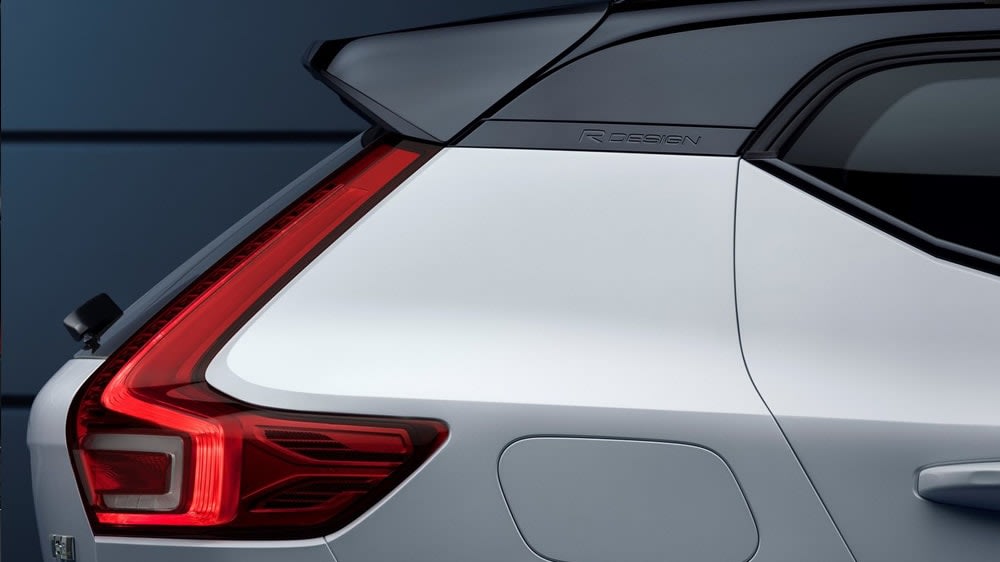
Performance & Drive
Firstly, scrap any thoughts of picking a frugal diesel engine - there are none. Instead, Volvo’s gone for a range of petrol engines, and two plugin hybrid options.
The range starts with the T2, a 1.5-litre unit producing 129hp, with the same engine tuned for more power in the T3; that develops 163hp. The B4 and B5 are 2.0-litre engines, with some mild-hybrid technology thrown in for good measure, developing 197 or 250hp respectively.
As the XC40 weighs around 1.6 tonnes, that doesn’t translate to stellar performance, especially when you miss out on the high torque levels that diesel produces. Still, the essential 0-62mph measure is ticked off in 10.9 seconds in the T2. There are incremental performance gains through the range until you hit the B5, which is a rocket ship. That’ll deal with the sprint in 6.4 seconds and carry on to, er, 112mph.
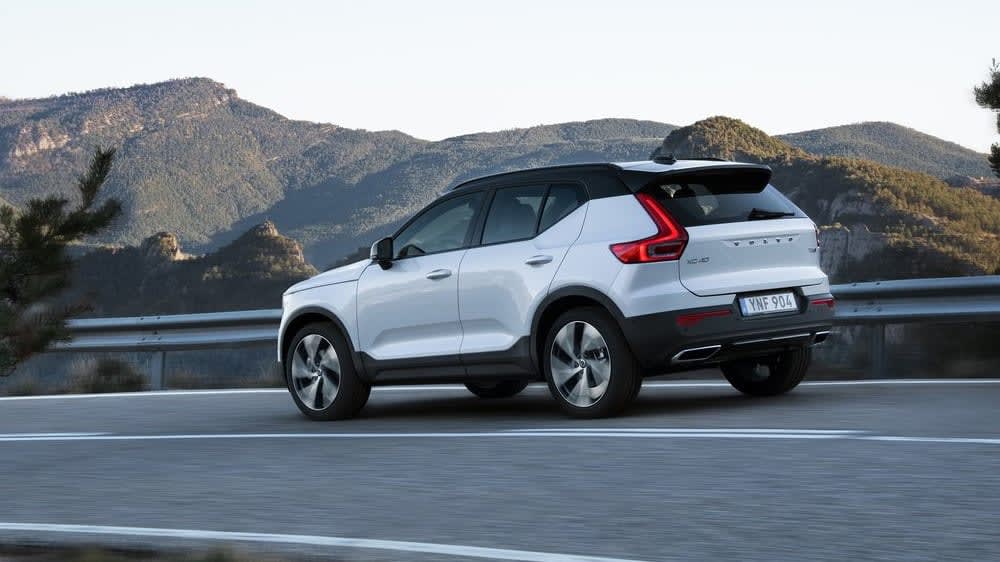
Why 112mph? All new Volvos are limited to that, so no matter how powerful a car you get, that’s as fast as you’ll be able to go. That should be fine for the UK, of course.
The T4 and T5 plug-in hybrids (called Recharge in Volvo parlance) enjoy slightly improved performance and hugely improved economy, assuming they’re charged up fully. The P8 pure-electric model is laughably fast thanks to 408hp and 660Nm of torque - expect a supercar-rivalling sub-five-second sprint time.
Volvo has eschewed the ever-increasing demand for firm ‘sporty’ suspension and aimed the XC40 at buyers that want comfort above on-the-limit handling prowess. It smoothes ripples and surface cracks in the road well and copes with broken urban roads just as consummately. It’s well-judged, and leaves you in a wonderfully comfortable environment, although hard cornering can leave the body leaning quite alarmingly.
R-Design models ride on slightly stiffer springs and keep the body roll in check, without too much compromise on ride comfort. It’s still not a sporty proposition though, despite the sharper styling and sporty trim, something you’ll soon realise on the open road, as all models have dull, lifeless steering.
Of course, that’s fine when you’re bumbling along, enjoying the drive and not being in a rush to set any cross-country records.
If you venture into the countryside a little farther, you’ll need to be in a higher spec car as only the B4 and B5 models are available with four-wheel drive.
Running Costs
With no diesels to opt for, the petrol-powered models begin to look a little thirsty. Even the most parsimonious will still only get 40.4mpg on the official test cycle, and personal experience suggests that’s quite an optimistic figure.
The plugin hybrids perform better, of course, with an official figure of 134.5mpg being stated. Again, the real-world will be different, but you could save a fortune if your daily use almost exactly matches the 25 miles or so you can go on pure electric power. Once the battery runs out, the petrol engine takes over and the economy plummets.
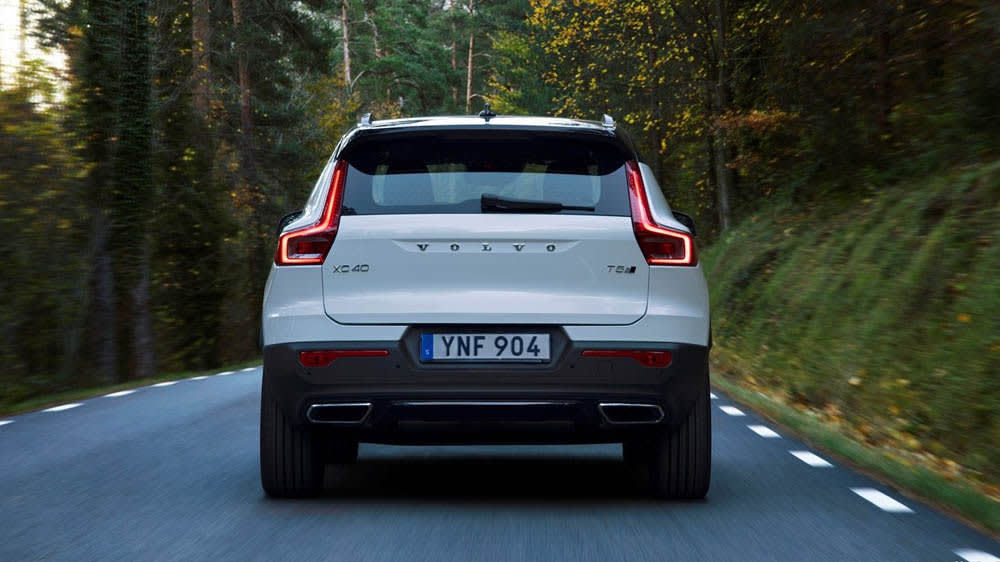
Company car drivers will like the tax benefits of the plugin models though, with some models attracting a 12% BIK rate. Regular car tax is the standard £150 for most models, with the hybrid options dropping to £140 a year. However, it’s possible to creep into list prices beyond £40,000, which brings an extra annual tax charge of £325 for five years.
Every new Volvo comes with a three-year warranty, limited to 60,000 miles. The battery in electric or hybrid models also has its own cover, running for eight years or 100,000 miles. You’ll also benefit from three years of Europe-wide breakdown and recovery cover, should the worst happen out on the road.
Interior
Volvo’s designers have been working overtime, but rather than adding everything to the car, they’ve managed to eliminate much of the untidy details you find in cars and left a minimalist but still luxurious cabin.
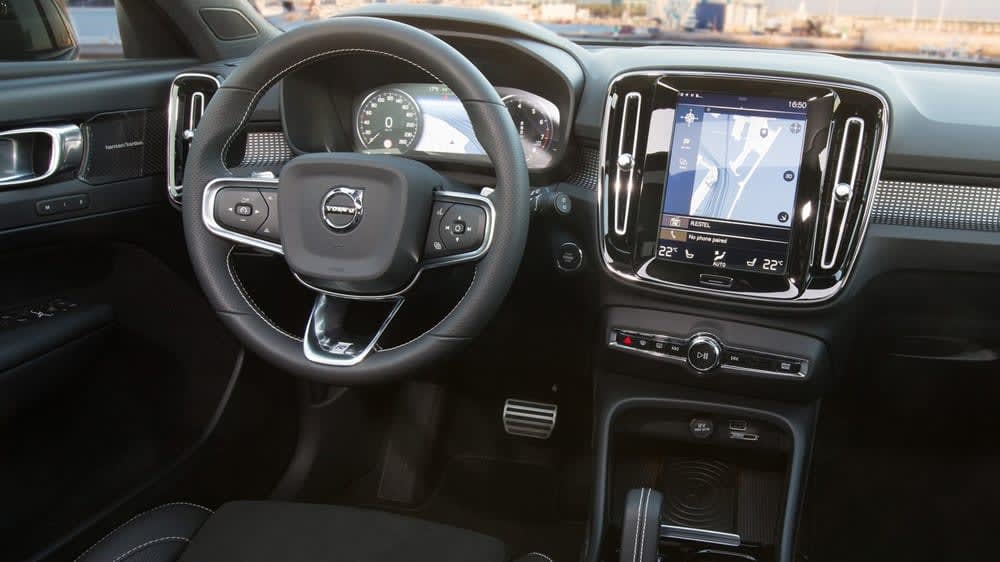
On anything but the entry-level Momentum Core model, there are gloss black plastics and aluminium inserts which add a sense of class. A digital instrument panel is standard fit, replacing traditional dials with digital ones that can be customised.
It’s all dominated by a 9.0-inch infotainment screen, mounted upright in the centre console. Looking like an iPad that’s got stuck, it allows access to every function, but there are still a handful of physical controls for important items like window demisting.
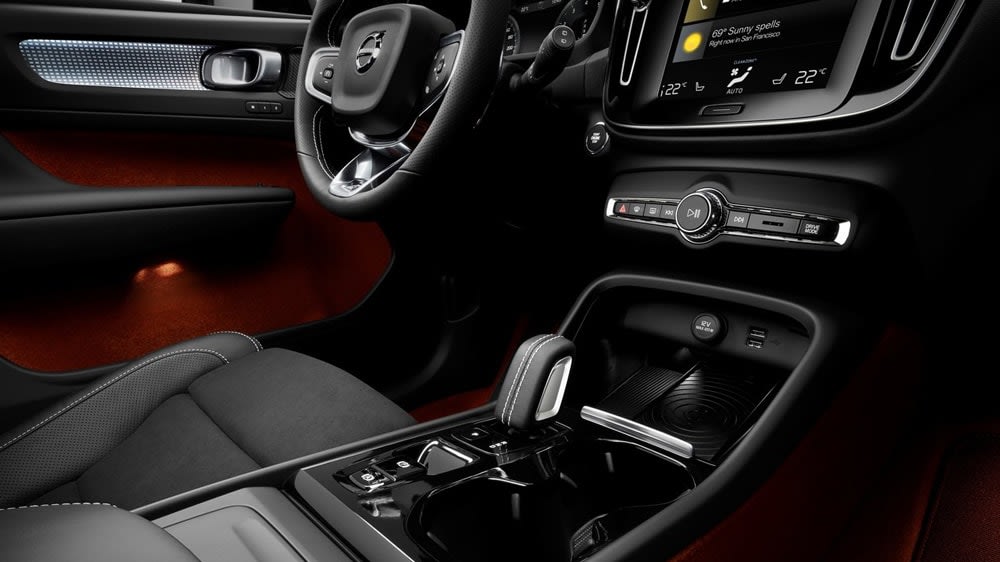
It’s all built exceptionally well and feels like it’ll cope with growing kids without falling apart. Yes, if you look low enough in the cabin and really hunt for it, you’ll find some lower quality plastics, but how often do you get on the floor and rub interior panels?
Practicality & Boot Space
Despite its relatively small dimensions - and body styling that makes it look more compact - there's actually a significant amount of space inside the XC40.
Up front, there’s more than enough headroom and elbow room. You’ll also see countless clever storage areas, including door pockets big enough to take some large bottles of water or your laptop. The optional Versatility Pack also adds sliding drawers under the seats keeping your valuables out of sight.
The rear seats are equally accommodating, with more than enough space for children, and just about enough for adults. Three adults can fit, if necessary, but the middle passenger will feel hard done by. They’ll also be happy with how much storage there is. Pay for the optional panoramic roof, however, and headroom vanishes.
The rear seats fold, and split 60/40 as most rivals do, revealing a boot that’s quite deceiving; measure every inch and, at 460 litres, it’s more compact than you’ll find in the BMW X1 or Range Rover Evoque, but it’s a sensible near-square shape with no unusable bits hiding in the corners. In real-life use, it’s as big as anything else. There’s also no lip to haul luggage over, meaning you can slide heavier items straight into the boot.
Safety
For a company that has traded on its safety credentials for decades, it’s no surprise that the XC40 scored the full five-stars in Euro NCAP’s crash safety testing. Protection for adults in the front is near-perfect, with the car scoring 97%, while child safety is also excellent. It’s even possible to specify an integrated child seat as an optional extra, which folds away and leaves a space suitable for an adult when not in use.
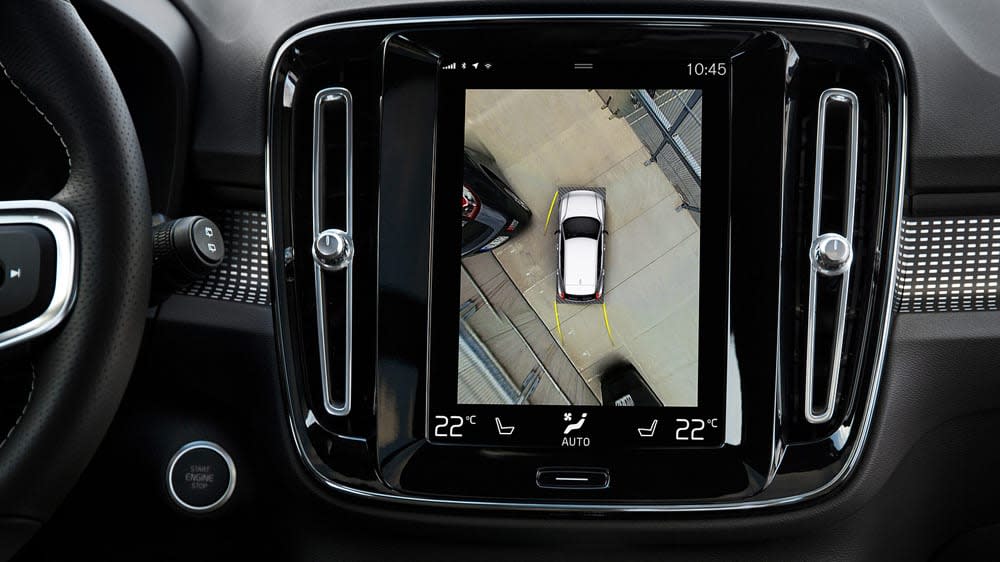
There’s a long, long list of safety equipment that comes as standard in every car across the range, from essentials like automatic emergency braking with pedestrian, cyclist and even large animal detection, to arguably less important features such as road sign information display.
You do, however, need to move up the range to get the benefit of a reversing camera, something that’s quite important as the visibility over the shoulder is dreadful - those chunky rear pillars look good but block a large amount of the outside world.
It’s also frustrating to see that the likes of adaptive cruise control, blind-spot warning and cross-traffic alerts are relegated to the options list. If you do want those, it’ll add £1,550 to the list price.
Options
Every XC40 comes well equipped, from expensive items such as automatic LED headlights with auto high beam as standard, through to unnecessary but surprisingly useful items like an integrated waste bin on automatic models.
The bold infotainment touchscreen that dominates the centre console includes European navigation with lifetime annual map updates, as well as a DAB radio and Bluetooth connectivity. Disappointingly, no XC40s come with Android Auto or Apple CarPlay, systems that are relegated to the options list at a cost of £300.
The Momentum Core model might have everything you need, but moving to the Momentum adds a few more things you’ll want, including some extra storage areas in the armrest and boot, as well as some smarter materials on the dashboard. Roof rails might also appeal to more active families.
R-Design models add sporting design touches, including a contrasting roof colour, dark tinted windows at the rear, and smart 18-inch alloy wheels. However, they also get loads of extra kit inside, such as a power tailgate, leather interior and multicolour ambient lighting. The R-Design Pro adds heated seats, windscreen and washer nozzles, power seats, bending headlights and sporty 20-inch alloys.
The top of the range is where you’ll find the Inscription and Inscription Pro models, and they’ve had everything thrown at them.
Who Rivals The XC40?
There are so many rivals for the Volvo XC40 that it’s difficult to know where to start, but it’s a fair bet that potential buyers won’t be looking at arguably better value (read cheaper) models such as the excellent Skoda Karoq or even something slightly more conventional such as a Ford Kuga.
If it’s style at all costs, the latest Range Rover Evoque will attract all the right kinds of attention. It’s sharper to drive and capable off-road, although the Volvo is more comfortable and offers far more equipment.
The same is true of the latest BMW X1, although that takes the sporty handling to a new level, at least for compact SUVs. The interior is glorious too, although in an entirely different way to the Volvo - high-tech and gadget-laden compared to minimalist and clean.
The Audi Q3is every bit as practical and provides a smooth ride - until you start hitting the high-performance S models - but it’s not particularly interesting to drive and prices can climb very rapidly.
Verdict & Next Steps
Volvo hasn’t followed the herd with the XC40, and it’s all the better for that. In ignoring the trend for overly-firm suspension supporting oversized alloy wheels on rubber band tyres, it’s ended up with an SUV that matches everything else on practicality but offers a far more refined and comfortable journey.
It’s not perfect, though; the trim levels seem to have been created purely to confuse while, for a brand that trades so heavily on safety, leaving some significant driving aids on the options list is disappointing. It also gets seriously expensive. But, by the time you’ve rolled any options into your lease payment, you won’t notice.
After being on the market for years, you’ll still be driving a class-leading model that does everything an SUV should do, and does all of it exceptionally well.
Lease price from £231.49**
Looking for another efficient SUV lease option? Why not read our new Nissan Qashqai Review or our 2020 Range Rover Evoque MHEV Review.
*Score based on Select’s unique meta score analysis, taking into account the UK’s top six leading independent car website reviews of the XC40.
**Correct as of 17/09/2020. Based on 9 months initial payment, 5,000 miles over a 48 month lease. Initial payment equivalent to 9 monthly payments or £2,083.43 . Ts and Cs apply. Credit is subject to status.



















